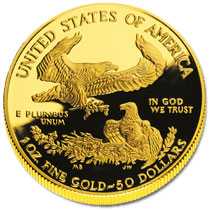This is the MCCC ARCHIVE – for the CURRENT Montgomery County Coin Club see https://montgomerycoinclub.org

January 1997 Bulletin
Next Meeting: Tuesday, January 21
The club will meet at 7 p.m. on Tuesday, January 21, 1997 at the Schweinhaut
Senior Citizens Center on Forest Glen Road in Silver Spring, Maryland.
Dr. Charles Tumosa of the Smithsonian Institution will continue his discussion
of nineteenth century Russian platinum coins and medals.
December Meeting Roundup
The November Charity Auction raised over $340, plus cash donations of more
than $200, and with matching funds from an anonymous donor the total comes
close to $800, which will be donated to the Wheaton & Silver Spring
Boys and Girls Clubs, in honor of the late Joe Clarke.
Librarian Kermit Smythe mentioned the new acquisition, Ancient History
from Coins, by Christopher Howgego, and some donated books, and encouraged
anyone who needs a list of the MCCC Library holdings to see him.
The Club voted in favor of nominating Scott A. Travers for ANA Vice
President in 1997. MCCC Vice President Ed Russell called for nominations
from the floor for club officers for 1997; since none were made, the vote
was held on the slate as listed in the December MCCC Bulletin:
-
President: Kenneth E. Swab
-
Vice President: William C. Massey
-
Second Vice President: Ed Russell
-
Treasurer: Simcha Kuritzky
-
Secretary: Jack Schadegg
-
Sergeant at Arms: John Herman
-
Directors: Andrew Luck, Don McKee,
John Pylypec, Kermit Smyth, and Mark Zimmermann
The new officers will be sworn in at the January meeting.
December Main Attraction: Dr. Charles Tumosa
The three dozen MCCC members at the December meeting heard Dr. Charles
Tumosa, a Ph.D. chemist from the Smithsonian Institution's Conservation
and Analytic Laboratory. Dr. Tumosa discussed Russian platinum coins and
medals of the 19th Century. Although technical difficulties with the slide
projector prevented most of his illustrations from being shown, Dr. Tumosa
improvised a fascinating presentation. The first Russian platinum coins
were minted in 1828, and platinum's high melting point required the use
of powder metallurgical techniques. Russian platinum has a high iridium
content, making it hard to work; osmium impurities make it toxic to refine.
Russian mints struck just over 3 million platinum coins, in denominations
of 3, 6, and 12 rubles. The Smithsonian collection contains about 45 of
these pieces. A well-worn 3-ruble platinum coin can be bought for about
$200, while a 3-rouble proof may sell for $700-$800, and a 12-rouble might
cost as much as $12,000. Dr. Tumosa cautioned that there are many counterfeits,
including large numbers of forgeries from the Beirut area made in the 1960's.
He warned against buying non-certified coins, and said that almost all
of the 12 ruble coins he had inspected were forgeries. Dr. Tumosa described
the stylistic evolution of the coins, including changes in the eagles and
other elements of the designs during 1828-1845.
Dr. Tumosa has written a book, not yet published, on Russian platinum
coinage. Dr. Tumosa has agreed to return in January 1997, after MCCC promised
to provide a better slide projector!
Exhibits
-
Jeff Crockett displayed a Citibank "$1 million" bill.
-
Ed Russell showed three dime banks --- one from 1892 (made of metal), one
from 1922 (celluloid, showing a manger scene), and the last from 1952 (plastic).
-
Simcha Kuritzky exhibited a Spanish 500 peseta coin minted in aluminum
bronze, with a hologram (or stereogram?) inset that displays a "96" at
one angle of view and a crowned "M" mintmark from another direction.
-
John Pylypec showed a "Scheerenschnitt" from the Waterford (VA) Fall Festival.
This German art form was created as a holiday ornament, and consists of
a delicate paper-cut made using tiny scissors, mounted between layers of
glass.
-
Ken Swab displayed a holiday greeting card containing a medallion from
Prince Bandar, the Ambassador of Saudi Arabia.
Other Activities
-
Winner of the 2 Peso gold piece drawing was John Pylypec.
-
Door prizes were garnered by Dorothy Blank, Bill Levy, Tom Hall and Kermit
Smythe.
-
The Bison Chip drawing was won by Kermit Smythe (after five names of members
not present were drawn).
-
One visitor was welcomed, Glenn Mitchell.
MCCC Web Comments and Feedback
Please send bug reports and suggestions for improvement to Mark
Zimmermann via z (at) his.com.
The MCCC Bulletin is copyright (c) 1999 by the Directors of the Montgomery County Coin Club.
